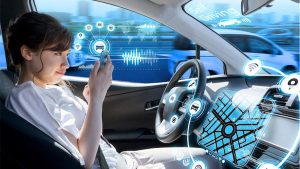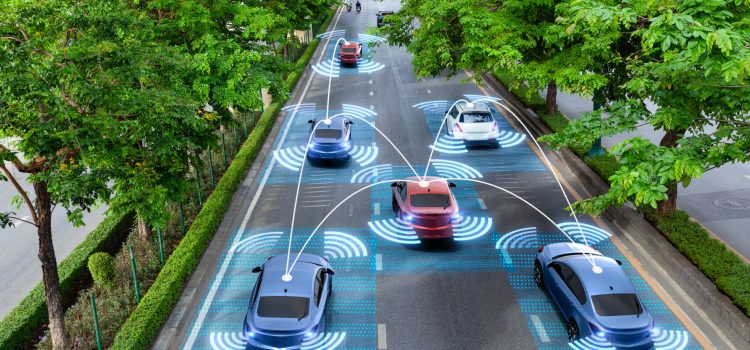
Technological Innovations Driving Autonomy

Autonomous vehicles represent a significant leap forward in transportation technology, primarily driven by enhanced sensor technologies that enable real-time environment analysis. These sensors, including LiDAR, radar, and advanced camera systems, work in unison to create a comprehensive and accurate representation of the vehicle’s surroundings. This real-time analysis is crucial for the safe and efficient operation of autonomous vehicles, allowing them to detect obstacles, interpret traffic signals, and navigate complex environments with a high degree of precision.
In addition to sensor technologies, advanced AI algorithms play a pivotal role in the decision-making and navigation processes of autonomous vehicles. These algorithms are designed to process vast amounts of data from the vehicle’s sensors, enabling the system to make informed decisions quickly and accurately. By leveraging machine learning and neural networks, these AI systems can continuously improve their performance, learning from each driving experience to enhance safety and efficiency over time. The integration of these technologies ensures that autonomous vehicles can navigate diverse driving conditions and respond to dynamic situations with a level of sophistication that surpasses human capabilities.
Legislation and Policy Developments
As autonomous vehicles become more prevalent, legislation is evolving to establish regulatory frameworks that ensure their safe and effective integration into society. Governments and regulatory bodies worldwide are actively working on developing comprehensive policies that address the unique challenges posed by autonomous vehicles. These frameworks aim to standardize safety protocols, liability issues, and operational guidelines, providing a clear and consistent regulatory environment for manufacturers, operators, and consumers.
Policy developments are also focused on enhancing safety standards for autonomous vehicles. This includes setting stringent requirements for vehicle testing, certification, and ongoing monitoring to ensure that these vehicles meet the highest safety benchmarks. By implementing robust safety standards, policymakers aim to build public trust and confidence in autonomous vehicle technology, paving the way for broader adoption and integration into the transportation ecosystem.
Safety Protocols and Risk Management

Ensuring the reliability of autonomous vehicles is paramount, and this is achieved through rigorous safety protocols. These protocols encompass a range of systems and processes designed to verify the performance and safety of autonomous vehicles under various conditions. This includes extensive testing in controlled environments, real-world pilot programs, and continuous monitoring of vehicle performance. By adhering to these protocols, manufacturers can identify and address potential issues before they become widespread, ensuring that autonomous vehicles operate safely and reliably.
Risk management is another critical aspect of autonomous vehicle operations, focusing on mitigating potential hazards. This involves implementing advanced safety features such as redundancy systems, fail-safe mechanisms, and real-time diagnostics to detect and respond to anomalies. Additionally, comprehensive risk assessment and management strategies are employed to anticipate and address potential risks associated with autonomous vehicle deployment. By proactively managing these risks, stakeholders can minimize the likelihood of accidents and ensure the safe integration of autonomous vehicles into the transportation network.
Autonomous Vehicles and Environmental Sustainability
Autonomous vehicles have the potential to significantly reduce emissions through optimized driving patterns. By leveraging advanced algorithms and real-time data, these vehicles can optimize routes, reduce idle times, and improve fuel efficiency. This results in lower greenhouse gas emissions and a reduced environmental footprint compared to traditional vehicles. Furthermore, autonomous vehicles can facilitate more efficient use of road infrastructure, reducing traffic congestion and associated emissions.
In addition to reducing emissions, autonomous vehicles also hold the potential for decreased reliance on fossil fuels. As the technology continues to evolve, there is a growing emphasis on integrating electric and alternative fuel systems into autonomous vehicles. This shift towards cleaner energy sources further enhances the environmental benefits of autonomous vehicles, contributing to a more sustainable and eco-friendly transportation system.
Economic Benefits and Job Market Shifts
The economic benefits of autonomous vehicles are multifaceted, including reduced transportation costs. By eliminating the need for human drivers, autonomous vehicles can lower operational costs for businesses and consumers alike. This reduction in costs can lead to more affordable transportation options, increased accessibility, and overall economic growth.
Increased productivity is another significant economic benefit of autonomous vehicles. By automating driving tasks, individuals can utilize travel time more effectively, engaging in work or leisure activities. This productivity boost can have far-reaching implications for various industries, enhancing overall economic efficiency and output.
However, the rise of autonomous vehicles also brings about shifts in the job market. While new tech jobs related to the development, maintenance, and operation of autonomous vehicles are emerging, there is a corresponding decline in traditional driving jobs. This transition necessitates a focus on workforce retraining and education to ensure that individuals can adapt to the changing job landscape and capitalize on new opportunities.
Integration with Smart Cities
Autonomous vehicles are poised to play a crucial role in enhancing urban mobility within smart cities. By seamlessly integrating with smart city infrastructure, these vehicles can contribute to more efficient and sustainable transportation systems. This includes leveraging real-time data from city networks to optimize traffic flow, reduce congestion, and improve overall urban mobility.
The seamless integration of autonomous vehicles with smart city infrastructure also enables the development of innovative transportation solutions. This includes autonomous public transit systems, shared mobility services, and advanced logistics networks. By aligning with smart city initiatives, autonomous vehicles can enhance the quality of urban life, promoting greater connectivity and accessibility for residents.
Consumer Trust and Adoption Trends
Consumer trust in autonomous vehicles is gradually increasing as the technology continues to demonstrate its safety and reliability. Public awareness campaigns, transparent communication from manufacturers, and positive real-world experiences are all contributing to building consumer confidence. As trust grows, more individuals are likely to consider adopting autonomous vehicle technology.
Adoption trends indicate a growing interest in autonomous vehicles, driven by their potential benefits in terms of safety, convenience, and efficiency. As the technology becomes more accessible and affordable, it is expected that the adoption rate will continue to rise. This trend is further supported by ongoing advancements in technology, regulatory developments, and the increasing availability of autonomous vehicle options in the market.
Conclusion:
In conclusion, the future of autonomous vehicles is shaped by technological innovations, evolving legislation, and a focus on safety and sustainability. As these vehicles become more integrated into our transportation systems, they promise to deliver significant economic, environmental, and societal benefits. By addressing the challenges and leveraging the opportunities presented by autonomous vehicles, we can pave the way for a more efficient, sustainable, and connected future.










